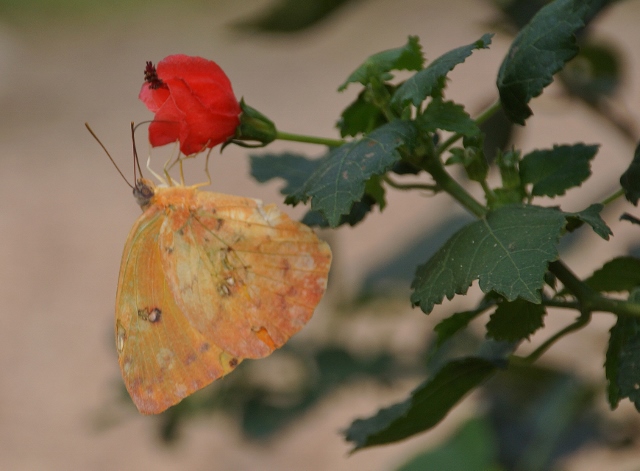
(Photo by Jolaine lanehart.)
Going native: transforming your yard with native plants
by Jolaine Lanehart, Texas Master Naturalist
If the first thing you think of when you hear “native plants” is an unruly patch of unkempt weeds, I invite you to explore the beauty and life that native plants bring to landscapes.
You don’t need to replace all plants in your existing yard, just a few at a time. Here are a few ideas to get you started on this exciting transformation:
Groundcovers can provide coverage in shady or sunny locations where other plants can’t survive. You probably have these in your yard now, so they are free! Straggler daisy has small yellow flowers and provides food for the Texas tortoise. Another choice is frog-fruit, with small white flowers and saw-toothed edged leaves. Frog-fruit provides food for white peacock and other butterfly caterpillars. Chisme (moss rose) is a third choice, with purple flowers. All require little care or water, provide nectar for butterflies, tolerate foot traffic, and are great for replacing non-natives such as hens and chicks, artemsia, and mondo Grass.
Non-native shrubs like Indian hawthorn, nandina, and crape Myrtles are often planted by developers and, like most non-native plants, require more water and work over their lifetime. Consider replacing with Barbados cherry (Manzanita) with its pink flower and bright red, edible fruit. Cenizo (purple sage) has bluish to purple flowers that appear after a rain. The gray foliage provides cooling contrast in sun-filled gardens. Drummond’s Turk’s cap has a small red flower 1.5 inches in length, just right for hummingbirds and butterflies. The fruit is used by many birds and animals.
Palm trees are abundant in the Rio Grande Valley, but the only native palm is the sabal palm. It is freeze-hardy, tolerates poor soils and drainage and is drought-tolerant. When other palms fail, plant these for their long lasting, care-free beauty and value. Anacahuita (Mexican olive) is a small tree with showy white flowers and edible fruits used by animals, birds and butterflies. It tolerates any soil and is a great replacement for vitex (chaste-tree).
For more information and resources, contact the Rio Grande Valley Chapter Texas Master Naturalists at www.rgvctmn.org.
The Rio Grande Valley Chapter Texas Master Naturalist develops knowledgeable volunteers dedicated to the study and conservation of natural resources and natural areas in the Lower Rio Grande Valley and helps the natural world through service, outreach and education